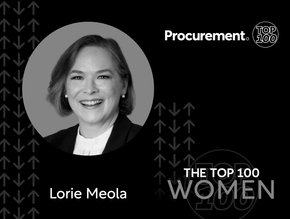
Kickbacks, price fixing, bid rigging – corrupting the procurement process has never been easier, or more profitable. According to the latest figures from the Association of Certified Fraud Examiners (ACFE), more than $4.7 trillion is lost annually to occupational fraud worldwide. From cryptocurrency scams to falsifying pandemic relief loans, the ongoing digitization and globalisation of modern business have created blind spots that continue to be exploited by bad actors, both internally and externally.
Procurement fraud is an especially destructive practice, aided in no small part by just how obvious it can be to detect. Procurement itself is the process of a business or government agency purchasing goods or services, usually through competitive bidding that involves multiple parties. Fraud occurs whenever there is an attempt to degrade the integrity of that acquisition process.
“The most common frauds involve a trade off, either in cash or kind, in exchange for a favour,” said EY in a recent report.” To give an example, a vendor may be issued a contract at a significantly higher price than the market price, and the procurement manager is compensated in cash, material items, or other ways for awarding the contract. Procurement malpractices are usually perpetrated by contractors, third party subcontractors, and, at times, might also involve in-house staff.”
As with all fraud, there can be a wide range of scenarios – from sophisticated schemes utilising international shell companies and high-level bribery to simple conflicts of interest and tiny charges meant to fly under the radar. For this reason, spotting procurement fraud takes constant vigilance and a unified view of all processes.

Four ways to Mitigate Procurement Fraud
As Warren Buffet pointed out in his 1998 Berkshire Hathaway Chairman’s Letter, “It has been far safer to steal large sums with a pen than small sums with a gun.” Meaning, in the history of business, there have always been individuals or groups that seek to gain an advantage by using the system against itself, searching for profitable vulnerabilities. Often a company’s own employees know these weak spots best and can manipulate either people or details to their benefit.
Despite the best intentions of hiring managers, a company is never truly able to predict the future actions of employees or vendors, especially when hundreds of millions of dollars are in play. Procurement fraud has touched every aspect of business, from well-respected global brands to government agencies, so it’s one of those rare threats that can truly impact any company at any time. Here are four safeguards to consider when reviewing your own internal procurement processes:
Consistently Reevaluate Approved Vendors
Complacency is the lifeblood of fraud, and procurement teams can be lulled into a false sense of security when dealing with longtime vendors. It may seem cynical, but Chief Procurement Officers (CPOs) should always operate with a, “What’s the worst that could happen?” mindset. Meaning, never assume that just because a vendor has passed your initial security checks or has a good industry reputation that they are incapable of malfeasance. All it takes is one bad actor or the influence of external pressures to turn a friend into a foe.
To prevent this from happening, it’s a good idea to hold regular review periods when you can reassess everything from a vendor’s software to their security protocols and their leadership. Remember though, change costs money, so vendors (or your own management team) might be resistant to the frequency of these reviews. Try to include these review periods in any contract language from the start of the relationship, just so everyone is aware of expectations ahead of time and you can maintain trust.
Keep a Digital History of Purchases and Partners
Artificial intelligence and machine learning have dramatically improved the ability to spot fraud by analysing huge amounts of data. It’s tough to argue with data, and patterns should emerge if you look close enough at transaction records. However, first, you need to have those records. Creating an all-in-one platform to track and optimise your procurement processes will help detect irregular activity patterns and hidden links. This unified view will also promote transparency in your procurement operation and more accurately measure results, resulting in increased ROI and an ability to detect future misconduct.
Centralize & Formalise Approval Workflows
The pace of business is accelerating rapidly, with decisions made in nanoseconds that can have lasting implications. Consider this scenario, which is based on a real-life situation. A company moves its accounts payable department to a foreign country, like Indonesia. One day, a clerk there gets an urgent email out of the blue from the CEO saying that they need to pay a certain vendor $400K right away. Under pressure, the clerk is able to bypass normal protocols, cut a check, and send it out. Of course, the email wasn’t actually sent by the CEO, but by some bad actor who forged the signature and masked the URL.
These types of probes prey on lower-level process managers, and they happen all the time. While it’d be easy to blame the attack on external forces, why does anyone at that lower level have the ability to send out that much money that quickly? Companies need much stricter controls and approval workflows in place to prevent their employees from being put in such vulnerable positions.
Restrict Accounts Payable from Processing RFPs without Proper Due Diligence & Signoff
Sticking with that example from accounts payable in Indonesia, several major red flags should have been raised right away and the issue might have been avoided with some basic due diligence. This is where internal controls can help provide a series of checks to ensure the origin of all requests. For example, validating supplier addresses with the US Postal Service, running the information against a secondary data source like the IRS, or matching bank account details to recipient names.
At the very least, procurement teams should encourage open communication and a culture of accountability. If that clerk had just quickly asked their manager, the situation would have probably seemed fishy enough to sound an alarm.
Preventing Procurement Fraud Starts with You
Criminals are clever, and they are constantly evolving their approach to circumvent safeguards. Unfortunately, this means no procurement team (or company for that matter) will ever be totally free from the risk of fraud. Kickbacks and other quid pro quo practices are especially difficult to detect, which is why whistleblowers are so vital and must be protected.
New threats are emerging every day, and vigilance is critical. By developing a unified view of your procurement processes and practising continuous learning among your team, we can all stay one step ahead of bad actors to ensure our methods are safe, secure, and sustainable.






